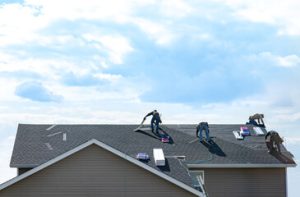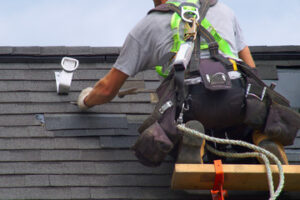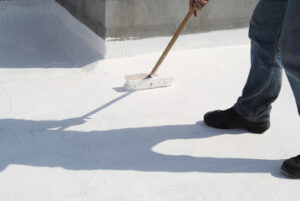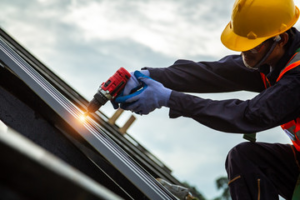A good concrete contractor can finish projects in a timely manner, saving you money on labor costs. They also know how to use the right materials and can optimize their usage for maximum efficiency.
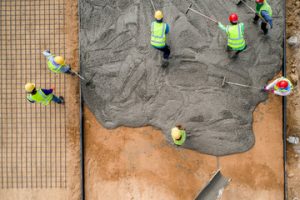
Safety is a big issue when working with concrete. Without proper PPE, cement dust can irritate the respiratory tract and penetrate the eyes and skin. Contact Concrete Companies Greensboro NC for professional help.
Concrete contractors have specialized knowledge and skills, which allows them to perform construction projects efficiently and accurately. They also stay informed of industry advancements to ensure that they are using the best methods available. This helps to avoid mistakes that can result in costly repairs down the road.
When selecting a concrete contractor, be sure to request references and check online reviews. You may even want to visit a job site to get a firsthand look at their work and determine if it is what you’re looking for. It is also important to find out if the contractor is licensed and insured, as this will protect you from any accidents or damages that may occur during construction.
In addition to ensuring that the concrete work meets all structural requirements, qualified contractors will use a variety of finishing techniques to enhance the aesthetics of the final product. This can include coloring, textures, and patterns that add visual appeal to both residential and commercial projects. They will work with architects, engineers, and other construction professionals to integrate the concrete work seamlessly into the project design.
Professional concrete contractors also have the necessary tools and equipment to handle any challenges that arise during construction. They will also maintain open communication with clients and respond quickly to any questions or concerns. This will help to ensure that the project is completed according to schedule and within budget.
When selecting a concrete contractor, it is important to look for certifications from material suppliers and associations for concrete professionals. This shows that they are knowledgeable about the latest innovations in the industry and have a commitment to continuing education and professional development. It is also important to check that the contractor is bonded and insured. This will ensure that they are capable of fulfilling their contractual obligations and will compensate you if they do not meet all expectations.
Experience
Concrete work is heavy and requires special equipment to transport, mix and pour. Professional contractors have the experience to handle the complex logistics involved with these large projects. They can ensure the job is done correctly and efficiently without wasting time or resources. They also know how to handle the unforeseen issues that may arise during construction.
A good concrete contractor will have years of experience in the business and understand the best practices for installation. They should also have extensive knowledge about different types of concrete and their applications. This allows them to advise clients on the type of concrete that will be most effective for their project.
In addition to their technical skills, good concrete contractors have excellent customer service and communication skills. They are able to respond to questions quickly and clearly, and they keep the client informed throughout the process. If you’re considering working with a particular concrete company, ask for references and visit previous projects to see the quality of their work.
You should also look for a concrete contractor that is certified by reputable industry organizations. This indicates that they’re committed to advancing their industry knowledge and are up-to-date on the latest trends. Cantera, for example, is a member of the American Subcontractors Association, Associated General Contractors of America, and the American Concrete Institute, which allows them to stay up-to-date on new developments in the concrete industry.
Choosing the right concrete contractor is essential for your commercial project. An experienced and reputable concrete company will provide you with high-quality results that will last for years to come. They will have the necessary tools and expertise to create the concrete structure you need, and their team will ensure that your project is completed safely and on schedule.
Saves You Money
Concrete construction is a time-consuming and labor-intensive process. Hiring an experienced concrete contractor can save you money by working quickly to complete the job. They can also reduce costs by optimizing material usage to ensure that no concrete is wasted. This makes them a good choice for projects with limited budgets.
If you hire a concrete contractor with extensive experience, you can expect quality results that will last. They have a solid understanding of concrete construction, including building codes and regulations. This allows them to anticipate any problems and resolve them efficiently, saving you both time and money.
Professional concrete contractors use high-quality materials and adhere to industry standards, resulting in superior work that is durable and visually appealing. Their workmanship reflects their commitment to excellence and enhances the value of your home or commercial property.
Whether you want to build a new driveway or repair an existing one, hiring an experienced concrete contractor can make the project easier and faster. They will help you select the right type of concrete for your needs and provide expert advice on how to maintain it. They will also help you navigate the construction process, ensuring that everything runs smoothly and on schedule.
Concrete companies in Holtsville, NY have the skills and equipment to tackle any size concrete project. Their extensive knowledge of the industry helps them to provide quality results at a reasonable price. In addition, they understand the ins and outs of building permits, saving you the hassle of dealing with bureaucracy. They can also help you obtain a loan or line of credit to finance your project, if needed. Lastly, they have access to large equipment like concrete pump trucks that would be cost-prohibitive for most homeowners.
Time
Getting into the concrete business requires a substantial investment, both of capital and time. If you are planning to run a concrete company, it’s important to focus on providing only the services that you are capable of delivering well and in a timely manner. Too many services can lead to inefficiencies, which may result in loss of income or even worse, a bad reputation.
For concrete contractors, estimating for new projects is often one of the most time-consuming tasks in their day. It’s common for someone interested in a concrete project to call a few different contractors to receive an estimate. They will usually leave their name and phone number, and the contractor they speak with promises to return the call within a few days.
However, that return call may never happen. The concrete estimator is probably too busy with bookkeeping tasks, or he/she is just too overwhelmed to respond to every call that comes in. In either case, the potential client gets frustrated and calls another concrete contractor to get an estimate.
A concrete company with accurate material calculations can save hours of work in the field for its workers. This is because the right amount of materials will be used, resulting in fewer construction flaws and less waste. Well-executed projects with minimal flaws also help to build a solid reputation that entices clients to refer more work to the concrete company.
For concrete contractors, it’s critical to invest in the right software tools that can help keep the business running smoothly and profitably. Knowify’s comprehensive platform provides a fully-stocked suite of advanced construction management tools that save concrete contractors valuable time and money. This includes the ability to create multi-phase budgets and estimates in minutes, with costs broken down by phase and category. It also allows concrete contractors to generate client-ready proposal documents in under a minute. Plus, it offers complete integration with QuickBooks, eliminating double-entry and saving time and effort.
Safety
Concrete is used almost everywhere, from residential foundations to modern roadways. It is a heavy and strong construction material that, when not handled properly, can be dangerous. With so many risks and hazards, having a solid safety checklist is essential for anyone working with concrete. The last thing you want is for someone to become ill or injured on the job. Rushing through safety checks might save a little time in the short term, but it can lead to injuries that could have been prevented with a more thorough check.
Workers must be careful when working with wet concrete, as it can cause skin irritation, dermatitis, and even third-degree chemical burns in extreme cases. It is important that employees wear long pants, full-length coveralls, waterproof boots and alkali-resistant gloves when working with concrete in any form. This is not only for their own safety, but also to protect their work equipment from being damaged.
Cement dust can cause irritation to the eyes, nose, and throat and can penetrate the lungs. This can lead to immediate discomfort like coughing and wheezing, but can also result in lung issues later in life. This is another reason it is critical that a worker wear proper protective gear and have emergency eye wash stations nearby.
Lifting and moving large amounts of concrete can be a very strenuous job for the back, shoulders, and joints. It is important that employees use proper lifting techniques, take regular breaks, and stretch their bodies. It is also a good idea to have a few mechanical aids available to help with lifting heavy objects, as well as to provide safe ways to transport materials.
